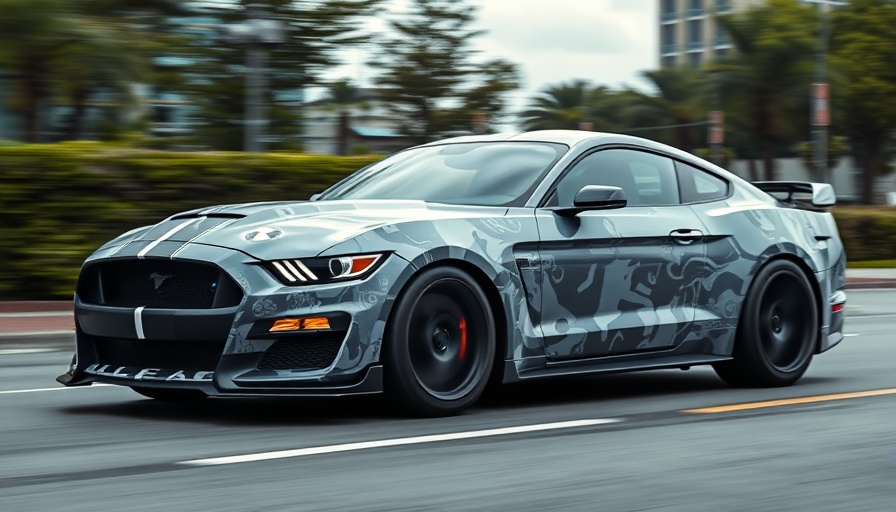
Ford's New Supercharged GT500: An Overview
The automotive world is buzzing with excitement over Ford's latest testing of what many believe to be a nearly production-ready Shelby GT500 in Metro Detroit. The unmistakable roar of its supercharged V-8 has captivated car enthusiasts and industry insiders alike. This prototype, caught on video, showcases a variety of exhaust setups, and even though the specifics remain wrapped in camouflage, it hints at significant horsepower and advanced engineering.
Performance and Specifications That Impress
One of the most anticipated aspects of the new GT500 is its powertrain. Rumblings indicate that it will maintain the beloved 5.2-liter 'Predator' V-8 engine from its predecessor, delivering an exhilarating output expected to fall between the previous model's 765 horsepower and the GTD's 815 horsepower. According to insiders, Ford is likely testing different performance configurations such as dual-clutch transmissions, tapping into technology that mirrors what is used in high-performance vehicles like the C8 Corvette.
What Sets This GT500 Apart?
Unlike its predecessors, which proudly flaunted the GT500 name, Ford may not use the iconic branding for this iteration. Recent strategic shifts, including the introduction of the 'Dark Horse' moniker for the top trim, suggest a desire to resonate with a younger demographic, further evolving their product line. As automotive marketing shifts, the brand's identity may transition, reflecting broader trends in consumer preferences.
The Aesthetics: Hidden Details Under Camouflage
The spy shots provide a tantalizing glimpse into the design elements that embody Ford's muscle car heritage. The flared fenders and aggressive stance, coupled with ultra-high performance tires from Michelin and Pirelli, indicate that the new GT500 is engineered for both aesthetics and formidable track performance. Enthusiasts can only imagine how these features will translate when stripped of their protective gear, revealing a striking yet familiar Mustang design.
Conclusion: What to Expect Next
As Ford continues to test this powerhouse, it's clear the automotive community eagerly awaits its unveiling. With its sonic signature already apparent and a powerful heart beneath the hood, the Ford GT500 promises to be a thrilling entry into the performance car segment. Stay tuned for more updates, as the automotive industry prepares for what could be a game-changing model on the market.
 Add Row
Add Row  Add
Add 




Write A Comment